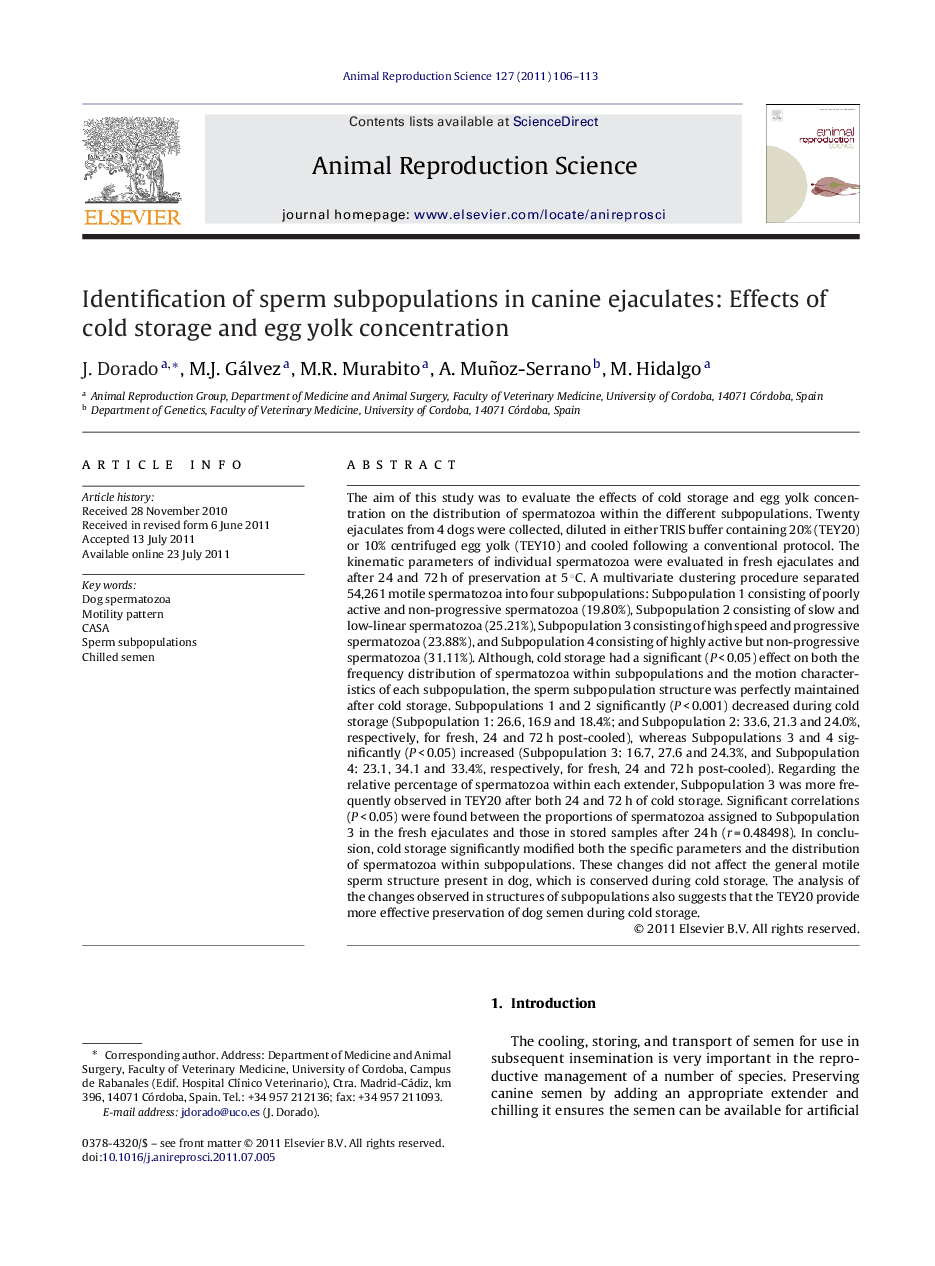| Article ID | Journal | Published Year | Pages | File Type |
|---|---|---|---|---|
| 2073565 | Animal Reproduction Science | 2011 | 8 Pages |
The aim of this study was to evaluate the effects of cold storage and egg yolk concentration on the distribution of spermatozoa within the different subpopulations. Twenty ejaculates from 4 dogs were collected, diluted in either TRIS buffer containing 20% (TEY20) or 10% centrifuged egg yolk (TEY10) and cooled following a conventional protocol. The kinematic parameters of individual spermatozoa were evaluated in fresh ejaculates and after 24 and 72 h of preservation at 5 °C. A multivariate clustering procedure separated 54,261 motile spermatozoa into four subpopulations: Subpopulation 1 consisting of poorly active and non-progressive spermatozoa (19.80%), Subpopulation 2 consisting of slow and low-linear spermatozoa (25.21%), Subpopulation 3 consisting of high speed and progressive spermatozoa (23.88%), and Subpopulation 4 consisting of highly active but non-progressive spermatozoa (31.11%). Although, cold storage had a significant (P < 0.05) effect on both the frequency distribution of spermatozoa within subpopulations and the motion characteristics of each subpopulation, the sperm subpopulation structure was perfectly maintained after cold storage. Subpopulations 1 and 2 significantly (P < 0.001) decreased during cold storage (Subpopulation 1: 26.6, 16.9 and 18.4%; and Subpopulation 2: 33.6, 21.3 and 24.0%, respectively, for fresh, 24 and 72 h post-cooled), whereas Subpopulations 3 and 4 significantly (P < 0.05) increased (Subpopulation 3: 16.7, 27.6 and 24.3%, and Subpopulation 4: 23.1, 34.1 and 33.4%, respectively, for fresh, 24 and 72 h post-cooled). Regarding the relative percentage of spermatozoa within each extender, Subpopulation 3 was more frequently observed in TEY20 after both 24 and 72 h of cold storage. Significant correlations (P < 0.05) were found between the proportions of spermatozoa assigned to Subpopulation 3 in the fresh ejaculates and those in stored samples after 24 h (r = 0.48498). In conclusion, cold storage significantly modified both the specific parameters and the distribution of spermatozoa within subpopulations. These changes did not affect the general motile sperm structure present in dog, which is conserved during cold storage. The analysis of the changes observed in structures of subpopulations also suggests that the TEY20 provide more effective preservation of dog semen during cold storage.
